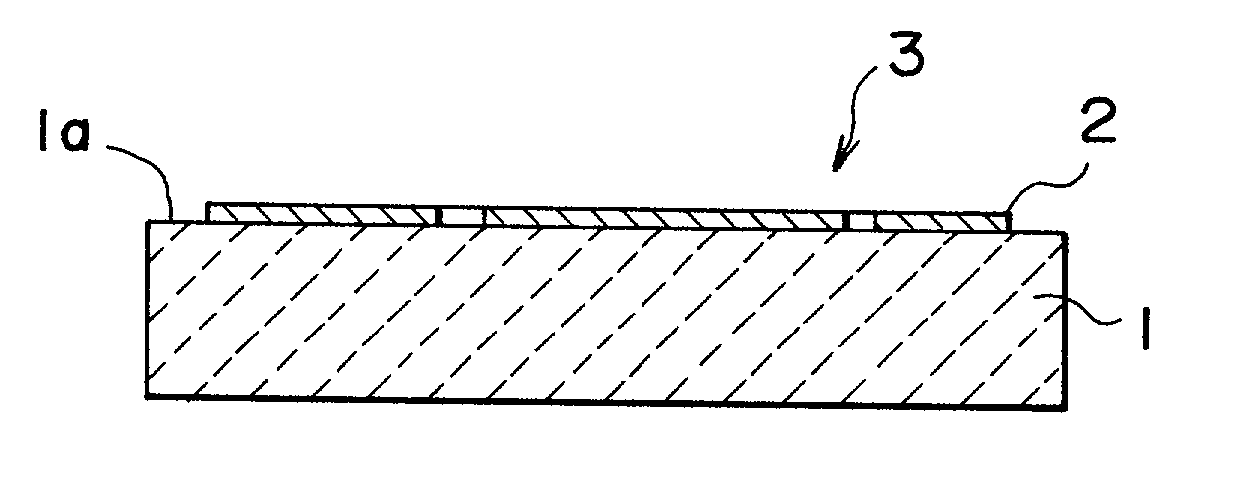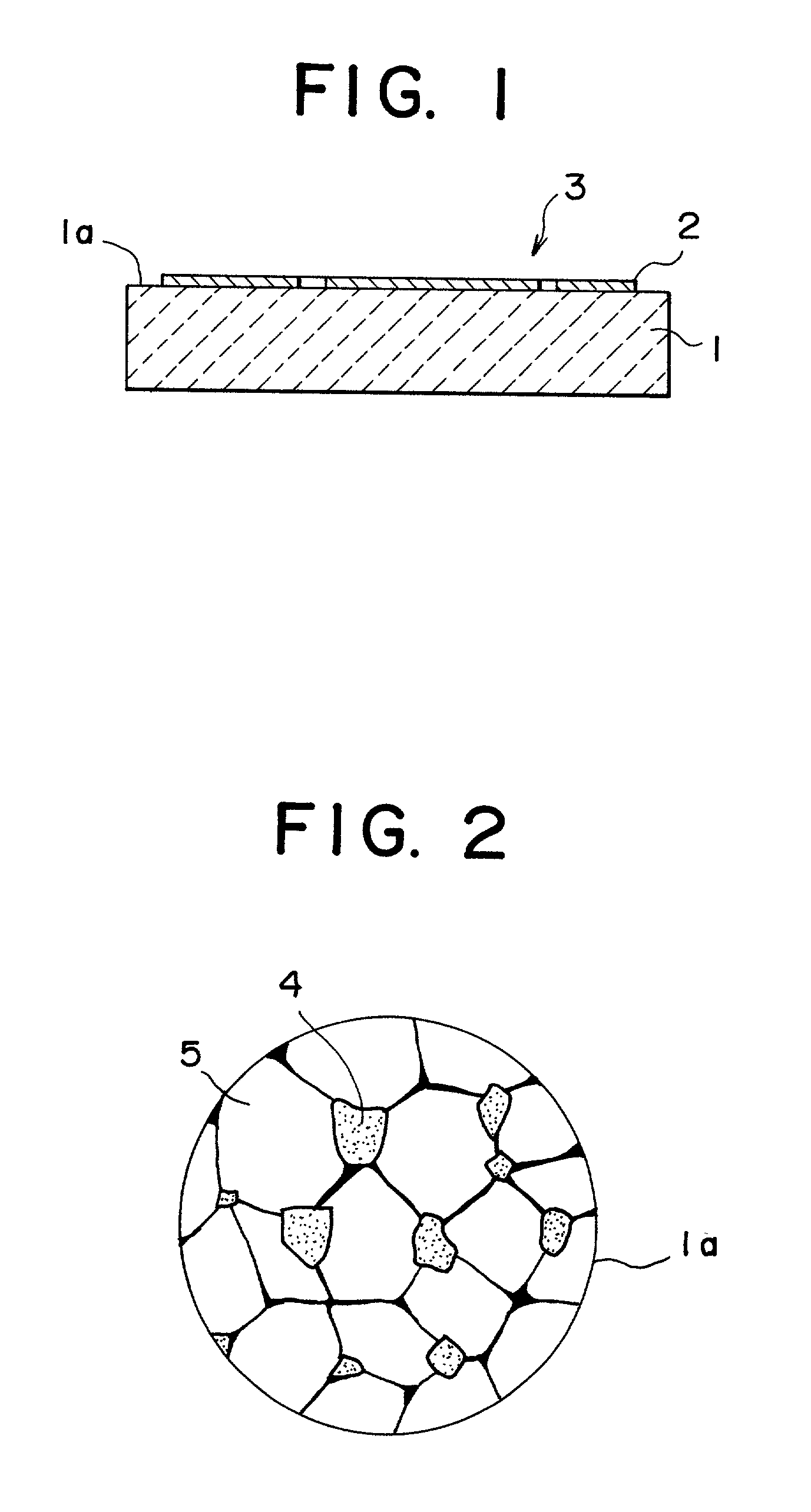Aluminum nitride substrate and thin film substrate therewith, and manufacturing method thereof
a technology of aluminum nitride and substrate, which is applied in the field of aluminum nitride substrate and thin film substrate therewith, and manufacturing method thereof, and can solve the problems of deteriorating sintering characteristics, less addition, and deteriorating thermal conductivity of circuits
- Summary
- Abstract
- Description
- Claims
- Application Information
AI Technical Summary
Benefits of technology
Problems solved by technology
Method used
Image
Examples
Embodiment Construction
, and Comparative Example 2, a metal thin film having a structure of Ti film (thickness: 100 nm) / Pt film (thickness: 200 nm) / Au film (thickness: 500 nm) is deposited on the machined surface thereof by means of vacuum deposition method (vacuum: 10.sup.-5 Pa). Thus, the individual thin film substrates are manufactured.
[0080] Of each of thus obtained thin film substrates, the peel strength of the metal thin film (multi-layered film of a substantial thickness of 800 nm) is measured. The peel strength is measured by means of scotch tape peel test. Specifically, Scotch Tape (manufactured by Sumitomo 3M Co), which is larger in its area than that of the metal thin film, is attached, and the attached tape is peeled at one stroke. An area ratio of remaining thin film (remaining area ratio=(remaining area after the peel test / an area before the peel test).times.100%) is measured. In addition, the similarly manufactured thin films are heated on a hot plate under the conditions of 450.degree. C.....
PUM
| Property | Measurement | Unit |
|---|---|---|
| Fraction | aaaaa | aaaaa |
| Fraction | aaaaa | aaaaa |
| Time | aaaaa | aaaaa |
Abstract
Description
Claims
Application Information
 Login to View More
Login to View More - R&D
- Intellectual Property
- Life Sciences
- Materials
- Tech Scout
- Unparalleled Data Quality
- Higher Quality Content
- 60% Fewer Hallucinations
Browse by: Latest US Patents, China's latest patents, Technical Efficacy Thesaurus, Application Domain, Technology Topic, Popular Technical Reports.
© 2025 PatSnap. All rights reserved.Legal|Privacy policy|Modern Slavery Act Transparency Statement|Sitemap|About US| Contact US: help@patsnap.com



